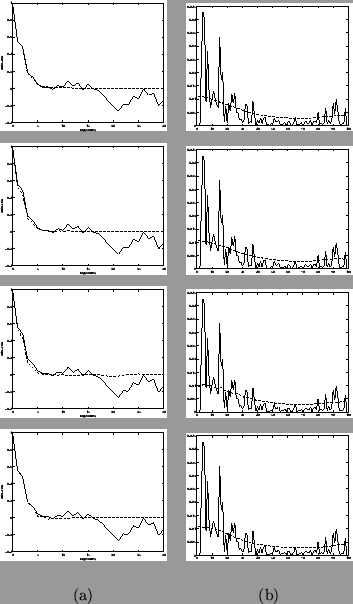A standard approach to taking raw estimates of the autocorrelation or equivalently of the spectral density is to window the raw time series prior to taking a Fourier Transform. This down-weights points at either end of the time series, reducing leakage due to end effects (Bracewell, 1978). Equivalently the raw autocorrelation estimate can be tapered such that it is downweighted at high lags. Intuitively, this seems reasonable since the precision of the raw autocorrelation estimates clearly decrease with high lag.
With either windowing of the time series or of the raw autocorrelation estimate,
the shape and size of the window needs to be decided upon. Here, we prefer to
use windowing of the raw autocorrelation estimate. This is because of
considerations of spatial regularisation which we will come to later. For a
time series ![]() for
for
![]() the raw
autocorrelation estimate at lag
the raw
autocorrelation estimate at lag ![]() is given by:
is given by:
The two favoured windows in the time series literature are the Tukey and Parzen windows, which appear to perform equally well (Chatfield, 1996). Hence, we arbitrarily concentrate on the Tukey window which is defined as:
The choice of the value for ![]() is a balance between reducing the variance whilst
minimising the distortion of the autocorrelation/spectral density estimate.
The variance in the
estimation of the spectral density
is given by (Chatfield, 1996):
is a balance between reducing the variance whilst
minimising the distortion of the autocorrelation/spectral density estimate.
The variance in the
estimation of the spectral density
is given by (Chatfield, 1996):
Large ![]() corresponds to less smoothing in the spectral domain.
A rough guide in the literature is to set
corresponds to less smoothing in the spectral domain.
A rough guide in the literature is to set ![]() to be about
to be about ![]() (Chatfield, 1996). For
(Chatfield, 1996). For ![]() this gives
this gives ![]() .
.
 |